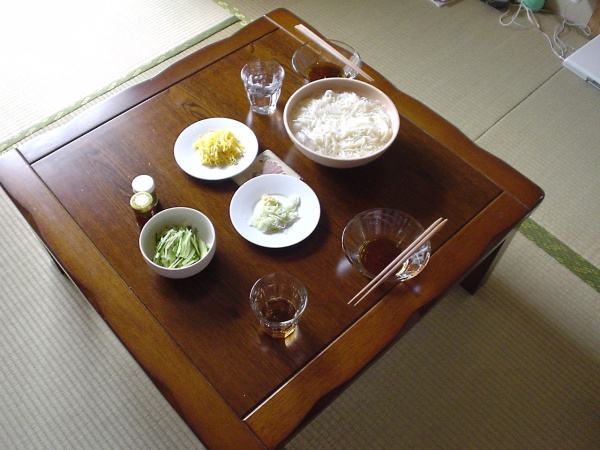Facts About Sōmen
Sōmen, known as sùmiàn or guàmiàn in China, are ultra-thin wheat flour noodles, measuring less than 1.3 mm in diameter, and are a staple in East Asian cuisines. In Japan, these noodles are typically enjoyed cold with a dipping sauce made from soy sauce and dashi, similar to mori-soba noodles. The process of making sōmen involves stretching the dough thinly using vegetable oil and then allowing it to air dry.
During the winter, sōmen is often served warm in a soup, a dish known as nyūmen in Japanese. This makes for a comforting and hearty meal during the colder months. In Japan, sōmen is especially popular and is typically accompanied by tsuyu, a light dipping sauce that can be enhanced with ingredients like katsuobushi (dried bonito flakes), scallions, ginger, or myoga (a type of Japanese ginger).
In the summer, chilled sōmen served on ice is a refreshing treat. For an extra bit of fun, some restaurants offer nagashi-sōmen, where the noodles flow down a bamboo flume filled with cold water. Diners catch the noodles with chopsticks as they pass by and dip them into the sauce. Some upscale dining spots even set up natural streams for this unique dining experience. If you’d like to try this at home, there are machines available that replicate the nagashi-sōmen experience.
Whether enjoyed cold in the summer or warm in the winter, sōmen is a versatile and beloved dish in East Asian cuisine.
